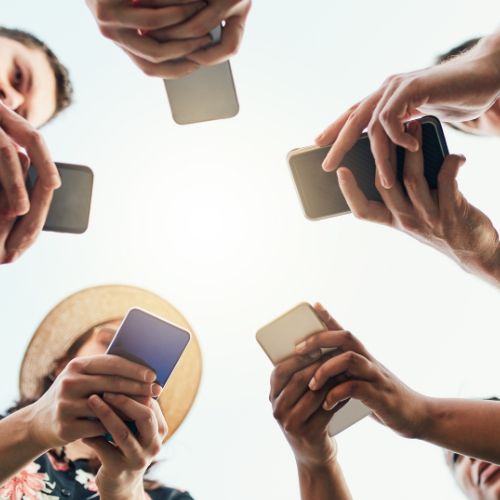
How Social Media Challenges Go Viral: The Psychology Behind It
Social media challenges have taken the digital world by storm, rapidly gaining popularity and captivating millions of users worldwide. From the Ice Bucket Challenge to the more recent TikTok dances, these viral trends seem to spread like wildfire, engaging diverse audiences across different platforms. But what makes these challenges go viral? What psychological factors drive people to participate, share, and keep the momentum going?
In this blog post, we’ll explore the psychology behind why social media challenges go viral, how they tap into human behavior, and the role of platforms in amplifying these trends.
1. The Power of Social Influence
At the core of viral social media challenges is social influence—the impact that other people’s actions have on our own behavior. Humans are social creatures, and we tend to mimic or follow the behaviors of others, especially when it’s something that seems fun, popular, or widely accepted.
When a social media challenge takes off, users see friends, influencers, and celebrities participating, which triggers a desire to be part of the trend. The more people who engage in the challenge, the more it becomes socially rewarding for others to join in. This bandwagon effect, where people feel compelled to do something simply because others are doing it, fuels the rapid spread of challenges online.
2. Fear of Missing Out (FOMO)
Fear of Missing Out, or FOMO, is a psychological phenomenon that plays a significant role in why social media challenges go viral. FOMO is the anxiety or concern that one is missing out on something exciting or important that others are experiencing. In the context of social media challenges, FOMO can drive users to participate simply to avoid feeling left out.
When a challenge goes viral, it creates a buzz across social platforms, and people feel the need to get involved before the trend dies down. They don’t want to miss the opportunity to be part of something that everyone else seems to be enjoying, and this urgency contributes to the challenge’s viral success.
3. The Desire for Social Approval
Social media is built around the concept of likes, shares, and comments, which provide users with instant feedback and validation. Participating in a viral challenge can offer a quick way to gain attention and social approval from one’s online community. When people take part in a challenge, they often receive positive reinforcement in the form of likes and comments, which boosts their sense of self-worth and belonging.
This reward system encourages more people to engage with the challenge, as it offers a chance to be recognized and appreciated by peers, followers, and even strangers. Social approval is a powerful motivator, driving individuals to participate and share their involvement in these challenges.
4. Identity and Self-Expression
Social media challenges offer users a unique opportunity to express themselves and showcase their creativity. Whether it’s through a dance routine, a charitable act, or a fitness challenge, these trends allow participants to shape their online identity in a way that aligns with the values or aesthetics of the challenge.
For example, TikTok’s dance challenges encourage users to put their own spin on popular moves, allowing for self-expression while still being part of a broader trend. This balance between fitting in and standing out appeals to people’s need for individuality while still engaging in a collective experience.
5. Gamification and Competition
Many viral social media challenges tap into elements of gamification—the application of game-like elements, such as rules, rewards, and competition, in non-game contexts. Challenges often come with a set of rules, objectives, or benchmarks, encouraging participants to “complete” the challenge and share their results.
The competitive aspect is especially evident in challenges that require skill, creativity, or endurance. Participants may feel motivated to outperform others or put a unique spin on their entry, driving more engagement and shares. The “challenge” aspect of these trends plays into the natural human desire to compete and succeed, further fueling their viral spread.
6. Ease of Participation
A key factor in why social media challenges go viral is the ease with which people can participate. Viral challenges often require minimal effort or resources, making them accessible to a wide range of people. Whether it’s recording a short video, replicating a dance, or sharing a hashtag, the barrier to entry is low, allowing even casual social media users to take part.
Challenges that are easy to understand and simple to execute have a higher chance of going viral because they reduce friction for potential participants. This inclusivity enables people from different backgrounds, age groups, and geographic locations to engage, expanding the reach of the challenge.
7. Emotional Engagement
Successful viral challenges often evoke strong emotions, whether it’s excitement, joy, or even empathy. The Ice Bucket Challenge, for instance, not only engaged users through a fun and slightly uncomfortable activity but also connected them to a deeper cause—raising awareness for ALS (Amyotrophic Lateral Sclerosis). This emotional appeal made people more likely to participate and share the challenge, as they felt they were contributing to something meaningful.
Emotionally charged challenges resonate with audiences on a deeper level, prompting them to engage not just for fun, but for the feelings they evoke. When a challenge strikes an emotional chord, it creates a stronger connection with participants, which increases its likelihood of going viral.
8. The Role of Algorithms and Platforms
Social media platforms like Instagram, TikTok, and Twitter play a significant role in amplifying viral challenges through their algorithms. These platforms prioritize content that generates high engagement, meaning that the more people interact with a challenge (through likes, shares, and comments), the more it gets promoted to a wider audience.
Additionally, features like trending hashtags, challenges, and curated “For You” pages on platforms like TikTok make it easier for viral challenges to gain visibility. The algorithm-driven nature of social media helps push viral content to the forefront, ensuring that challenges reach as many users as possible, further fueling their spread.
9. Influencer and Celebrity Participation
When influencers and celebrities get involved in a challenge, it significantly boosts its visibility and appeal. Many social media users look to influencers for inspiration, and when they see a well-known figure participating in a challenge, they are more likely to follow suit.
For instance, the popularity of the “In My Feelings” challenge skyrocketed after celebrities like Will Smith and Drake joined in, encouraging millions of fans to replicate their versions. Influencer and celebrity involvement adds credibility and excitement to the challenge, making it more appealing to a broader audience.
10. The Element of Fun
At the heart of most viral challenges is one simple fact: they’re fun. Whether it’s a dance, a lip-sync, or a charitable cause, these challenges bring a sense of enjoyment and entertainment to participants. The fun factor keeps people engaged, encourages creativity, and brings joy to both participants and viewers.
When people have fun participating in a challenge, they are more likely to share their experience with others, inviting more people to join in. The contagious nature of fun and laughter is one of the most powerful drivers behind the viral success of social media challenges.






